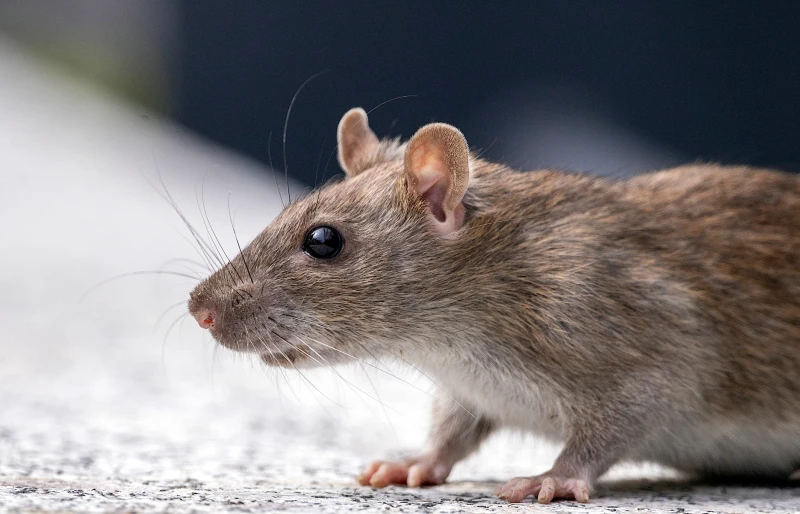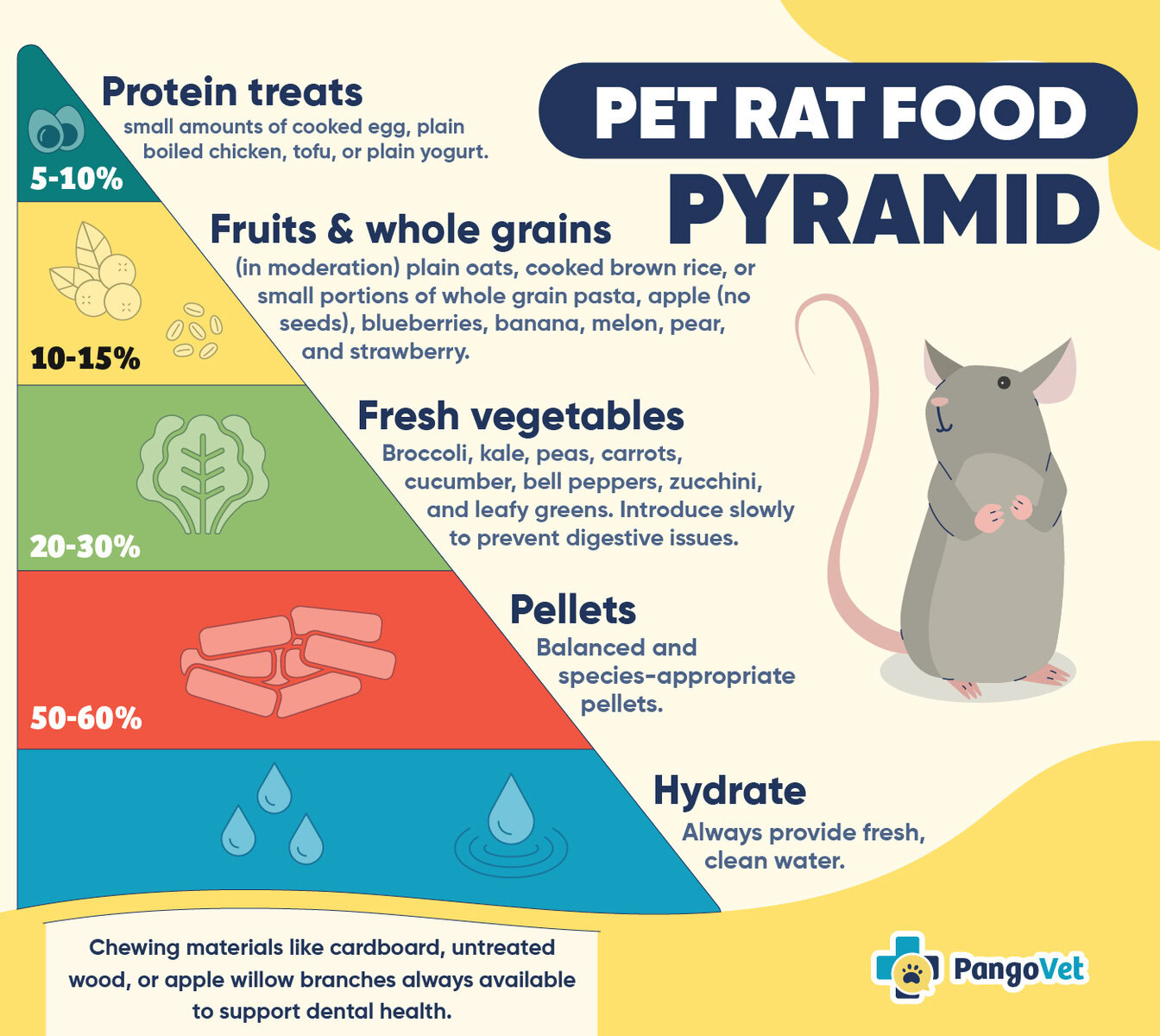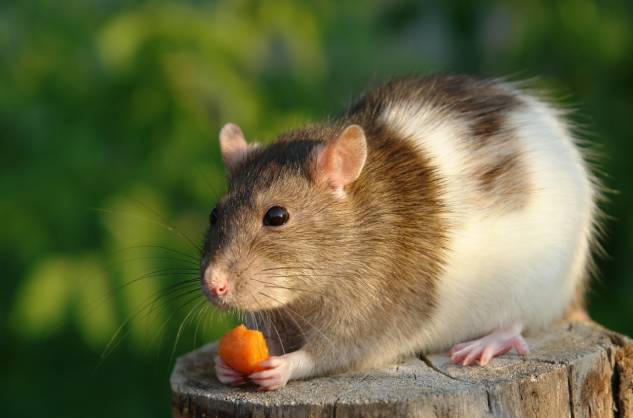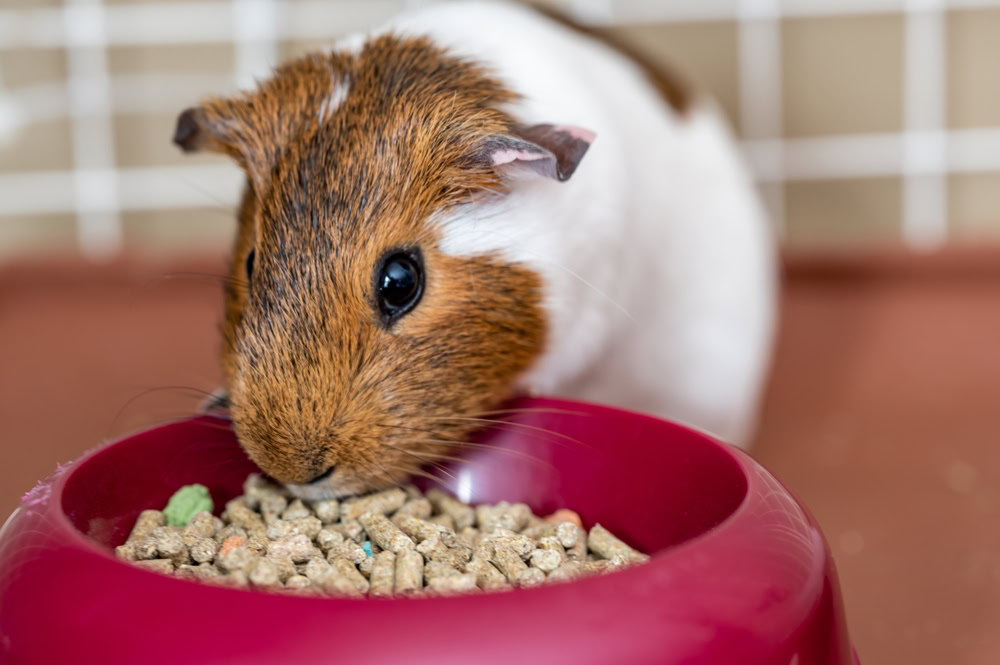VET APPROVED

The information is current and up-to-date in accordance with the latest veterinarian research.
Learn more »Click to Skip Ahead
Rats have been seen as dirty rodents for far too long. Although they sometimes find themselves in less-than-sanitary conditions, people have fallen in love with them as pets. Rats live in almost all areas of the world. In the wild you can find them living in trees, shrubs, and tall grasses, but they also take comfort near our homes and spend time living in attics, eaves, and rafters.
Rats are essential to our ecosystem because they are a food source for dozens of different predators. If they are always being eaten, what are rats eating themselves? Rats are omnivores and have a varied diet that is determined by what is available. Honestly, they aren’t very picky about what they put in their mouths. Keep reading as we explore the differences in their diet when they’re in the wild versus when they are our pets.

Where Do Rats Come From?

Stereotypical rats are several dozen rodents found in the genus Rattus. The most well-known species within this genus are the black rat (Rattus rattus) and the brown rat (Rattus norvegicus). These rats are thought to have originated in Asia. However, they are found in all continents across the Earth with the exception of Antarctica.
Selective breeding of the brown rat led to the eventual formation of rats used for both experiments and pet-keeping. Consequently, the brown rat is the progenitor for all laboratory and pet rats found all over the world. The domesticated subspecies of brown rats are referred to as Rattus norvegicus domestica.
The evolution and growth of humans have taken rats from the fields of vegetation and lured them closer to cities. While many people still believe they are dirty animals that spread disease, there are also many more people who know what good companions they can be.
Most species of rats, including the brown rat, are nocturnal animals that you don’t often see during the day. All rats spend the majority of their time hiding until the sun goes down. You can find them in gardens, houses, barns, and other man-made buildings where they often burrow. So what do these rats eat since they live in such close proximity to us?
What Do Wild Rats Eat?
Rats are omnivores and have a varied diet. Honestly, they aren’t very picky about what they put in their mouths. In rural environments, most rats eat leaves, fruits, stems, grains, cereals, smaller mammals, eggs, snails, fish, and seeds. When times are really desperate for food, they have been known to turn to cannibalism to survive. Rats have to adapt to what they’re eating in order to survive in different environments.
Rats have migrated extensively to urban areas because there is almost always a steady supply of food. Urban rats are usually found near human dwellings, within drains, around dumpsters, or in sewers. They’re often observed near locations with water, presumably because water intake is equally important to them as food. Consequently, they often end up drinking poor-quality water that would be considered contaminated by us. Remarkably though, they’ve gained a great deal of resistance to the pathogens found in such waters (but this also makes them a significant biohazard risk for us). Because of their location, most city or sewer rats end up eating garbage thrown out by humans.
- See Also: Can Mice Eat Cheese?
What Do Pet Rats Eat?

The life of a pet rat is understandably quite different from that of a wild rat. With no need to find food, they definitely have a distinct survival advantage over wild rats. However, pet rats still retain much of their tendency to opportunistically scavenge for food whenever the opportunity arises.
Their scavenging instinct, when coupled with the fact that they often receive less exercise than their wild counterparts, can quickly lead to an overweight or obese pet. To make matters worse, rats are very inept at eating a proper diet whenever they’re offered a choice among different foods – they quickly develop preferences for their favorite food items.
Thankfully, advancements in pet care have made the task of feeding pet rats much easier for owners today. A pellet made specifically for pet rats is the generally accepted dietary base for pet rats today. This ensures that they receive proper nutrition, while not being able to pick and choose their favorite food options (due to how a pellet is made). In addition, a pellet helps pet rats keep their teeth properly worn down as they gnaw and chew on them.
Pet rats still benefit from the addition of other foods to their diet. The preferred foods for such feedings are high-fiber foods such as hay, or certain vegetables. Due to their scavenging tendencies, they also appreciate smaller servings of safe seeds and nuts scattered throughout their enclosure. This also promotes exercise as they roam about trying to find these morsels. However, these additions should not be considered a major constituent of their diet.
Fruits are popular among humans for their various health benefits and taste. Many fruits are indeed safe for rats to eat. However, fruits are often too high in sugar to be justified as a dietary staple for a pet rat. They should be viewed as treats only; there’s no nutrition a rat would obtain from fruits which they wouldn’t obtain from other food options.
- See Also: 10 Best Rat Foods – Reviews & Top Picks

What Foods Are Not Safe for Rats?
Despite being told that rats eat anything they come across, this isn’t the full truth. While some rats put whatever they want in their mouths, they do have instincts that tell them what to stay away from. Their instincts are not always right, however, and they lack the ability to expel food and sometimes die from intoxication.
- Cheese
- Alcohol
- Raw legumes
- Candy
- Raw Beans
- Raw Potato (any part of the plant)
- Seasoned Meats
- Milk
- Raw Meats
- Processed Foods

Conclusion
Rats aren’t the dirty, creepy animals that we have been told they are. Sure, it’s best to steer clear of wild rats, but that doesn’t mean you can’t have a domesticated rat who enjoys your company. These animals are intelligent and have unique personalities that a lot of animal lovers appreciate. Even though their eating habits aren’t entirely different from being in the wild, we can offer them a much healthier diet when they are under our care.
You may also want to read:
- Can Rats Eat Avocado?
- Can Rats Eat Celery?
- Can Rats Eat Onions?
- How to Take Care of a Pet Rat (Care Sheet & Guide)
Featured Image Credit: Pshenicka, Shutterstock










